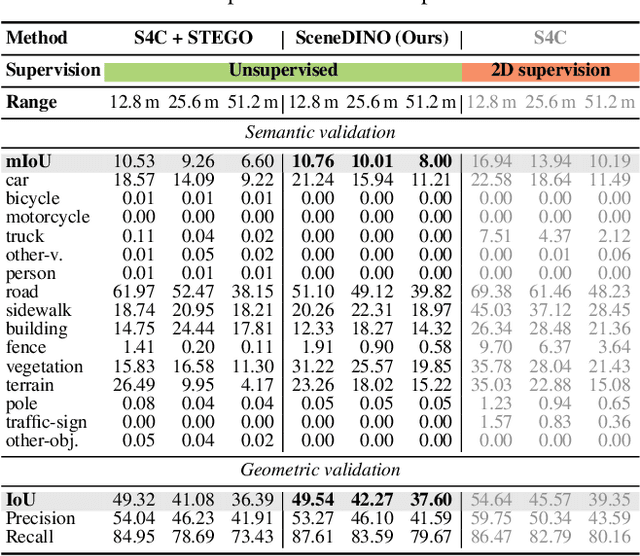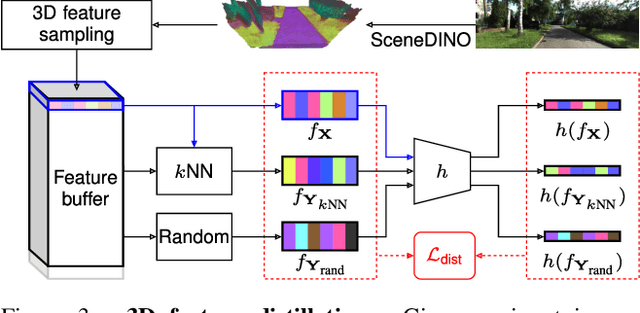Stefan Roth
Hardware-Efficient Cognitive Radar: Multi-Target Detection with RL-Driven Transmissive RIS
Sep 17, 2025Abstract:Cognitive radar has emerged as a key paradigm for next-generation sensing, enabling adaptive, intelligent operation in dynamic and complex environments. Yet, conventional cognitive multiple-input multiple-output (MIMO) radars offer strong detection performance but suffer from high hardware complexity and power demands. To overcome these limitations, we develop a reinforcement learning (RL)-based framework that leverages a transmissive reconfigurable intelligent surface (TRIS) for adaptive beamforming. A state-action-reward-state-action (SARSA) agent tunes TRIS phase shifts to improve multi-target detection in low signal-to-noise ratio (SNR) conditions while operating with far fewer radio frequency (RF) chains. Simulations confirm that the proposed TRIS-RL radar matches or, for large number of elements, even surpasses MIMO performance with reduced cost and energy requirements.
Activation Subspaces for Out-of-Distribution Detection
Aug 29, 2025Abstract:To ensure the reliability of deep models in real-world applications, out-of-distribution (OOD) detection methods aim to distinguish samples close to the training distribution (in-distribution, ID) from those farther away (OOD). In this work, we propose a novel OOD detection method that utilizes singular value decomposition of the weight matrix of the classification head to decompose the model's activations into decisive and insignificant components, which contribute maximally, respectively minimally, to the final classifier output. We find that the subspace of insignificant components more effectively distinguishes ID from OOD data than raw activations in regimes of large distribution shifts (Far-OOD). This occurs because the classification objective leaves the insignificant subspace largely unaffected, yielding features that are ''untainted'' by the target classification task. Conversely, in regimes of smaller distribution shifts (Near-OOD), we find that activation shaping methods profit from only considering the decisive subspace, as the insignificant component can cause interference in the activation space. By combining two findings into a single approach, termed ActSub, we achieve state-of-the-art results in various standard OOD benchmarks.
Efficient Masked Attention Transformer for Few-Shot Classification and Segmentation
Jul 31, 2025Abstract:Few-shot classification and segmentation (FS-CS) focuses on jointly performing multi-label classification and multi-class segmentation using few annotated examples. Although the current state of the art (SOTA) achieves high accuracy in both tasks, it struggles with small objects. To overcome this, we propose the Efficient Masked Attention Transformer (EMAT), which improves classification and segmentation accuracy, especially for small objects. EMAT introduces three modifications: a novel memory-efficient masked attention mechanism, a learnable downscaling strategy, and parameter-efficiency enhancements. EMAT outperforms all FS-CS methods on the PASCAL-5$^i$ and COCO-20$^i$ datasets, using at least four times fewer trainable parameters. Moreover, as the current FS-CS evaluation setting discards available annotations, despite their costly collection, we introduce two novel evaluation settings that consider these annotations to better reflect practical scenarios.
Feed-Forward SceneDINO for Unsupervised Semantic Scene Completion
Jul 08, 2025



Abstract:Semantic scene completion (SSC) aims to infer both the 3D geometry and semantics of a scene from single images. In contrast to prior work on SSC that heavily relies on expensive ground-truth annotations, we approach SSC in an unsupervised setting. Our novel method, SceneDINO, adapts techniques from self-supervised representation learning and 2D unsupervised scene understanding to SSC. Our training exclusively utilizes multi-view consistency self-supervision without any form of semantic or geometric ground truth. Given a single input image, SceneDINO infers the 3D geometry and expressive 3D DINO features in a feed-forward manner. Through a novel 3D feature distillation approach, we obtain unsupervised 3D semantics. In both 3D and 2D unsupervised scene understanding, SceneDINO reaches state-of-the-art segmentation accuracy. Linear probing our 3D features matches the segmentation accuracy of a current supervised SSC approach. Additionally, we showcase the domain generalization and multi-view consistency of SceneDINO, taking the first steps towards a strong foundation for single image 3D scene understanding.
Anomaly Detection for Sensing Security
Jun 12, 2025Abstract:Various approaches in the field of physical layer security involve anomaly detection, such as physical layer authentication, sensing attacks, and anti-tampering solutions. Depending on the context in which these approaches are applied, anomaly detection needs to be computationally lightweight, resilient to changes in temperature and environment, and robust against phase noise. We adapt moving average filters, autoregression filters and Kalman filters to provide predictions of feature vectors that fulfill the above criteria. Different hypothesis test designs are employed that allow omnidirectional and unidirectional outlier detection. In a case study, a sensing attack is investigated that employs the described algorithms with various channel features based on commodity WiFi devices. Thereby, various combinations of algorithms and channel features show effectiveness for motion detection by an attacker. Countermeasures only utilizing transmit power randomization are shown insufficient to mitigate such attacks if the attacker has access to channel state information (CSI) measurements, suggesting that mitigation solutions might require frequency-variant randomization.
Disentangling Polysemantic Channels in Convolutional Neural Networks
Apr 17, 2025Abstract:Mechanistic interpretability is concerned with analyzing individual components in a (convolutional) neural network (CNN) and how they form larger circuits representing decision mechanisms. These investigations are challenging since CNNs frequently learn polysemantic channels that encode distinct concepts, making them hard to interpret. To address this, we propose an algorithm to disentangle a specific kind of polysemantic channel into multiple channels, each responding to a single concept. Our approach restructures weights in a CNN, utilizing that different concepts within the same channel exhibit distinct activation patterns in the previous layer. By disentangling these polysemantic features, we enhance the interpretability of CNNs, ultimately improving explanatory techniques such as feature visualizations.
Scene-Centric Unsupervised Panoptic Segmentation
Apr 02, 2025Abstract:Unsupervised panoptic segmentation aims to partition an image into semantically meaningful regions and distinct object instances without training on manually annotated data. In contrast to prior work on unsupervised panoptic scene understanding, we eliminate the need for object-centric training data, enabling the unsupervised understanding of complex scenes. To that end, we present the first unsupervised panoptic method that directly trains on scene-centric imagery. In particular, we propose an approach to obtain high-resolution panoptic pseudo labels on complex scene-centric data, combining visual representations, depth, and motion cues. Utilizing both pseudo-label training and a panoptic self-training strategy yields a novel approach that accurately predicts panoptic segmentation of complex scenes without requiring any human annotations. Our approach significantly improves panoptic quality, e.g., surpassing the recent state of the art in unsupervised panoptic segmentation on Cityscapes by 9.4% points in PQ.
Boosting Omnidirectional Stereo Matching with a Pre-trained Depth Foundation Model
Mar 30, 2025Abstract:Omnidirectional depth perception is essential for mobile robotics applications that require scene understanding across a full 360{\deg} field of view. Camera-based setups offer a cost-effective option by using stereo depth estimation to generate dense, high-resolution depth maps without relying on expensive active sensing. However, existing omnidirectional stereo matching approaches achieve only limited depth accuracy across diverse environments, depth ranges, and lighting conditions, due to the scarcity of real-world data. We present DFI-OmniStereo, a novel omnidirectional stereo matching method that leverages a large-scale pre-trained foundation model for relative monocular depth estimation within an iterative optimization-based stereo matching architecture. We introduce a dedicated two-stage training strategy to utilize the relative monocular depth features for our omnidirectional stereo matching before scale-invariant fine-tuning. DFI-OmniStereo achieves state-of-the-art results on the real-world Helvipad dataset, reducing disparity MAE by approximately 16% compared to the previous best omnidirectional stereo method.
Beyond Accuracy: What Matters in Designing Well-Behaved Models?
Mar 21, 2025Abstract:Deep learning has become an essential part of computer vision, with deep neural networks (DNNs) excelling in predictive performance. However, they often fall short in other critical quality dimensions, such as robustness, calibration, or fairness. While existing studies have focused on a subset of these quality dimensions, none have explored a more general form of "well-behavedness" of DNNs. With this work, we address this gap by simultaneously studying nine different quality dimensions for image classification. Through a large-scale study, we provide a bird's-eye view by analyzing 326 backbone models and how different training paradigms and model architectures affect the quality dimensions. We reveal various new insights such that (i) vision-language models exhibit high fairness on ImageNet-1k classification and strong robustness against domain changes; (ii) self-supervised learning is an effective training paradigm to improve almost all considered quality dimensions; and (iii) the training dataset size is a major driver for most of the quality dimensions. We conclude our study by introducing the QUBA score (Quality Understanding Beyond Accuracy), a novel metric that ranks models across multiple dimensions of quality, enabling tailored recommendations based on specific user needs.
Covertness in the Near Field: Maximizing the Covert Region with FDA
Nov 22, 2024Abstract:Covert communication in wireless networks ensures that transmissions remain undetectable to adversaries, making it a potential enabler for privacy and security in sensitive applications. However, to meet the high performance and connectivity demands of sixth-generation (6G) networks, future wireless systems will require larger antenna arrays, higher operating frequencies, and advanced antenna architectures. This shift changes the propagation model from far-field planar-wave to near-field spherical-wave which necessitates a redesign of existing covert communication systems. Unlike far-field beamforming, which relies only on direction, near-field beamforming depends on both distance and direction, providing additional degrees of freedom for system design. In this paper, we aim to utilize those freedoms by proposing near-field Frequency Diverse Array (FDA)-based transmission strategies that manipulate the beampattern in both distance and angle, thereby establishing a non-covert region around the legitimate user. Our approach takes advantage of near-field properties and FDA technology to significantly reduce the area vulnerable to detection by adversaries while maintaining covert communication with the legitimate receiver. Numerical simulations show that our methods outperform conventional phased arrays by shrinking the non-covert region and allowing the covert region to expand as the number of antennas increases.
 Add to Chrome
Add to Chrome Add to Firefox
Add to Firefox Add to Edge
Add to Edge